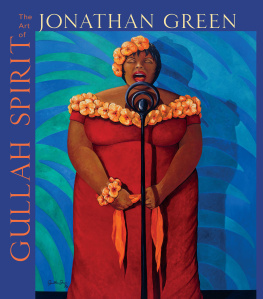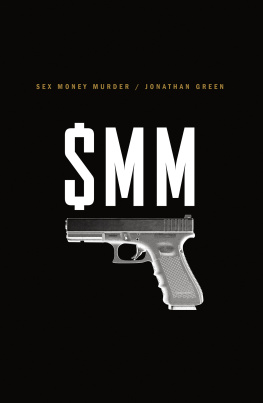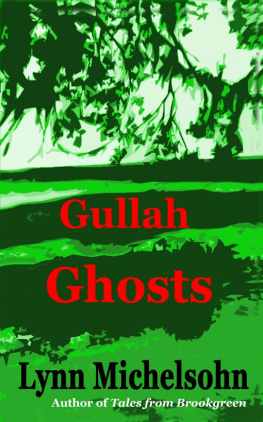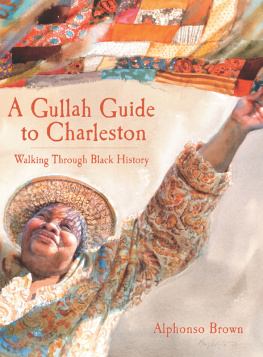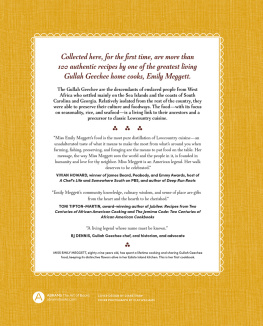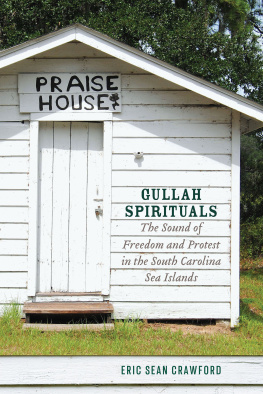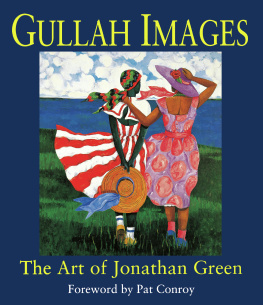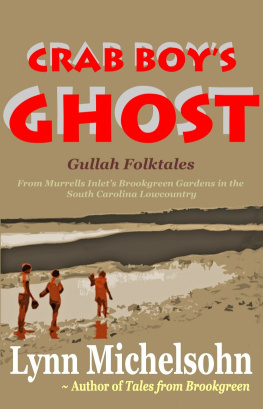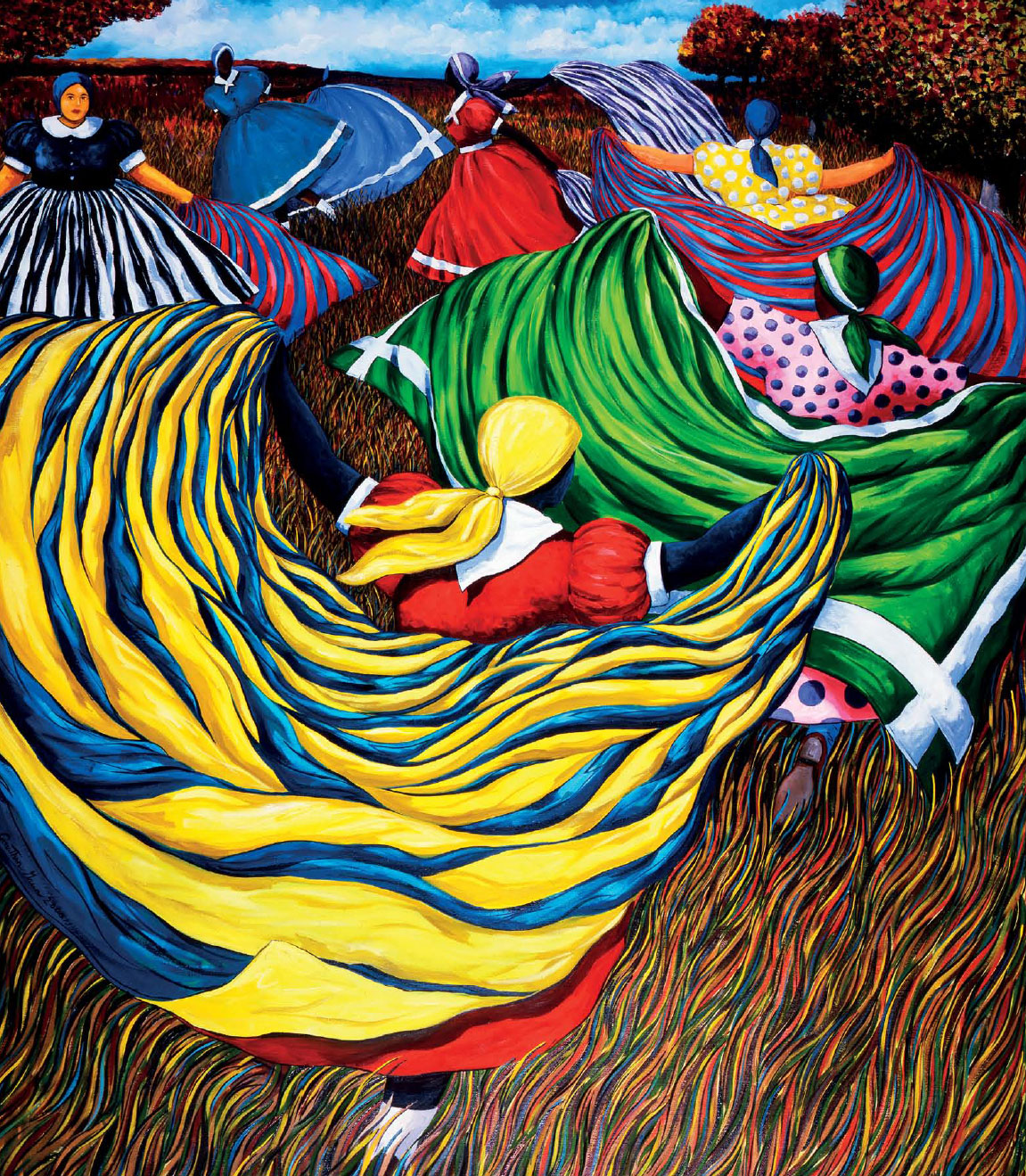Contents
Page List
Guide
GULLAH SPIRIT
GULLAH SPIRIT
The Art of
JONATHAN GREEN
Jonathan Green

2021 University of South Carolina
Published by the University of South Carolina Press
Columbia, South Carolina 29208
www.uscpress.com
Manufactured in China
30 29 28 27 26 25 24 23 22 21
10 9 8 7 6 5 4 3 2 1
Library of Congress Cataloging-in-Publication Data can be found at http://catalog.loc.gov/.
ISBN 978-1-64336-213-7 (hardcover)
ISBN 978-1-64336-214-4 (ebook)
Photographs courtesy of Jonathan Green Studios archive.
Frontispiece: Harvest Dance, 2000. Oil on Canvas, 60 48.
FRONT COVER ILLUSTRATION: A Time for Love, 1996. Oil on Canvas, 60 48
This book is dedicated to Kim Cliett Long, EdD.
CONTENTS
Angela Mack
Walter Edgar
Kevin Grogan
Kim Cliett Long
Angela Mack
FOREWORD
Twenty-five years have passed since the publication of Gullah Images: The Art of Jonathan Green. Described in Pat Conroys eloquent foreword as marking the middle of his artistic career, Gullah Images not only chronicles Greens considerable artistic accomplishments up to that point but also sets expectations for the future that have now been realized and documented throughout this volume.
With time comes experience, and with experience comes a sense of self that has increased Greens influence across the country not only as an artist and designer but also as an art collector, humanitarian, cultural ambassador, and philanthropist. Greens reach and influence are extraordinary. And although Green will tell you that his success stems from the adage, paint what you know, in fact, audiences around the world have come to know the Gullah community of his birth through him.
Often Jonathan Green is identified as the first classically trained Gullah artist in America, which also synopsizes his journey. Born in Gardens Corner, South Carolina, his specialness was recognized and marked from birth. A caul, an inner fetal membrane that covered his head at birth, is interpreted by some societies as a token of great luck, but in the Gullah tradition it also signifies that a child will be a point of pride for the community, a prophecy that has been fulfilled in the intervening six decades.
The second of seven children, Green was raised by his maternal grandmother, who not only taught him the Gullah language but also the traditions of his ancestors that stretch back to the Gold Coast of West Africa. Gullah is a name used to describe a population of people descended from the Africans who were enslaved and brought to America to labor on the rice and indigo plantations along the coastal regions of South Carolina and Georgia. Their agricultural skills and knowledge and later their deeply rooted sense of community have been a great source of pride for generations, even during the harshest and most brutal of times. This pride is most evident through generational storytelling. Greens young life began by his listening to myriad stories told by his community elders. He was also taught that education and hard work were keys to success. After graduating from high school where his artistic bent was first noticed, he did a brief stint in the United States Air Force, mostly to achieve a scholarship for further education. He set his sights on the School of the Art Institute of Chicago and completed his BFA in 1982.
While there, Green augmented his funds by working as a security guard at the Art Institute museum, which introduced him to the wealth of objects in the encyclopedic collection as well as to the relationships that develop between museums, patrons, audiences, and artists. It was during this time that he met and eventually fell in love with Richard Weedman. On the surface you would surmise that Green and Weedman had little in common. Weedman grew up on his familys dude ranch in South Dakota. He raised horses and taught clients how to ride. He often tells the story of meeting the legendary actress Helen Hayes, who arrived at the ranch one day in 1950 to take lessons and ended up giving him an exorbitant tip.
Weedman grew up with the arts and credits his mothers literary prowess and the artistic interests of his aunt, who studied art at the progressive University of Iowa arts program along with the great African American artist Elizabeth Catlett and the Regionalist painter Grant Wood. Weedman came to love the visual arts and minored in the subject at the University of New Mexico, where his uncle was an art professor, while dreaming of becoming a great collector. However, his head for business led him in a different direction, away from his life in the West to Chicago and a successful career in the health care field. It was here in the late 1970s that he met Jonathan Green over drinks at a bar, and their life together began.
By the mid-1980s, Jonathan Green and Richard Weedman were living in Chicagos Seneca Hotel near the John Hancock Center. After his years as a student learning his craft, and the experience that comes with travel during his military career and afterward to broaden his knowledge of the arts, Green began in earnest his journey to discover and define his signature style and subject matter. Every artist worth writing about makes this journey, some more successfully than others, but it is always the result of immense discipline, keen observation, and never-ceasing practice.
It was the African American artists who claimed the opportunity to participate in President Franklin Roosevelts New Deal programs such as the Federal Art Project of the Works Progress Administration (WPA) who served as Greens artistic models and mentors. Chicago was the perfect place for him and Weedman to meet and interact with them, including Charles White, Elizabeth Catlett, William S. Carter, Eldzier Cortor, and Margaret Burroughs, especially through the South Side Community Art Center, which later became the first Black art museum in the United States. A healthy dose of home sickness for his place of birth also played a role in the development of Greens subject matter as did the desire to uplift and recognize the beauty and pride of his Gullah upbringing.
Over the next twenty years the public witnessed Greens meteoric rise in reputation and financial success. Weedman retired from his highly successful career to become Greens business manager, and the two moved to the warmer climate of Naples, Florida. The financial crisis of 2008 brought them to South Carolina. The art market collapsed, and for Green, coming home was as much a necessity as it was a balm, which came in the form of physically reconnecting with his roots and giving back to the communities of the Lowcountry.
The Low Country Rice Culture Project was one of his first endeavors to help reveal and broaden understanding of Gullah contributions to the agricultural economy that defines the regions history and was the source of its wealth. Numerous other community endeavors followed and have led to recognitions and awards at the national, state, and local levels of government and philanthropy, including the title of the city of Charleston Ambassador for the Arts. All the while his disciplined approach to his art has remained and as a result his growth as an artist has continued and matured.

